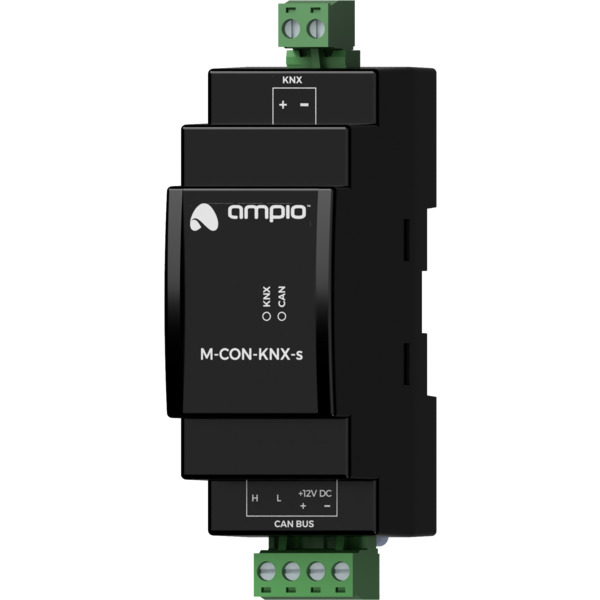
The image above is for illustration purpose only. The actual module may vary from the one presented here.
Module M-CON-KNX-s is a component of the Ampio system. Required voltage to power the module is 11 — 16V DC. The module is controlled via CAN bus.
The module enables two-way communication between devices operating within the CAN and KNX bus. Both buses used by the device are galvanically isolated from each other.
The module is designed for mounting on a 35mm DIN rail. The module’s width is 35mm, 2 spaces/modules in DB. In order to start the module, it must be connected to the CAN bus. The bus of the Ampio system consists of four wires - two for power and two for communication between the modules.
In addition to the CAN bus interface, the device has a two-wire KNX bus interface.
On the front of the module there are signalling LED indicators. The green LED with the label CAN indicates the status of communication on the CAN bus:
In addition to the LED indicating the status of the CAN bus, on the front of the device there is also a red LED labelled KNX. If it lights up, it means that the devices have received a KNX telegram.
The module is programmed with the use of the Ampio Designer software. It allows you to modify the parameters of the module and define its behaviour in response to signals directly available to the module as well as general information coming from all devices present in the home automation bus.
Dimensions expressed in millimeters.
Click to enlarge and open in a new tab.